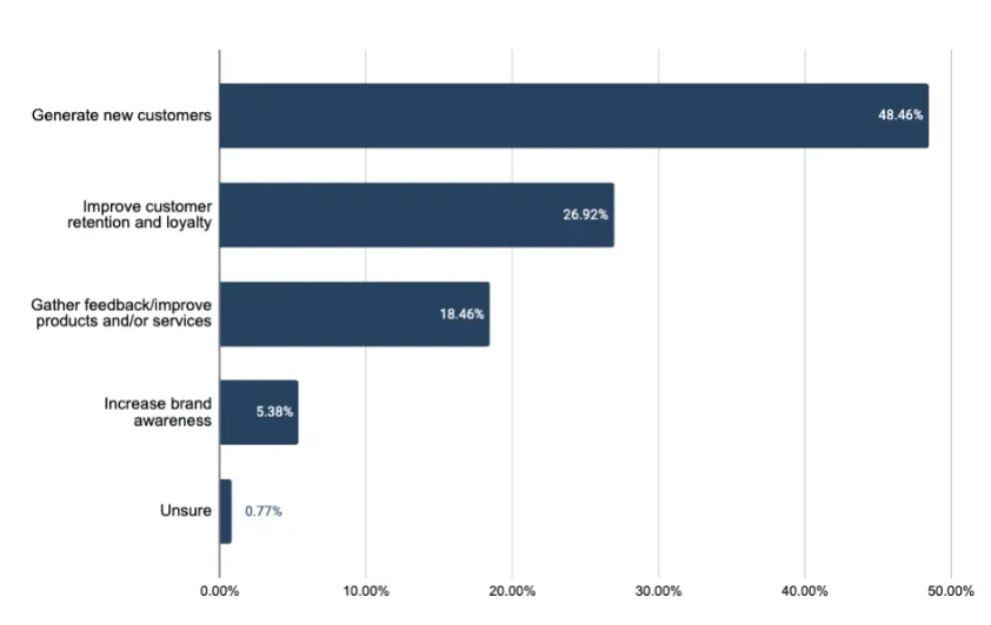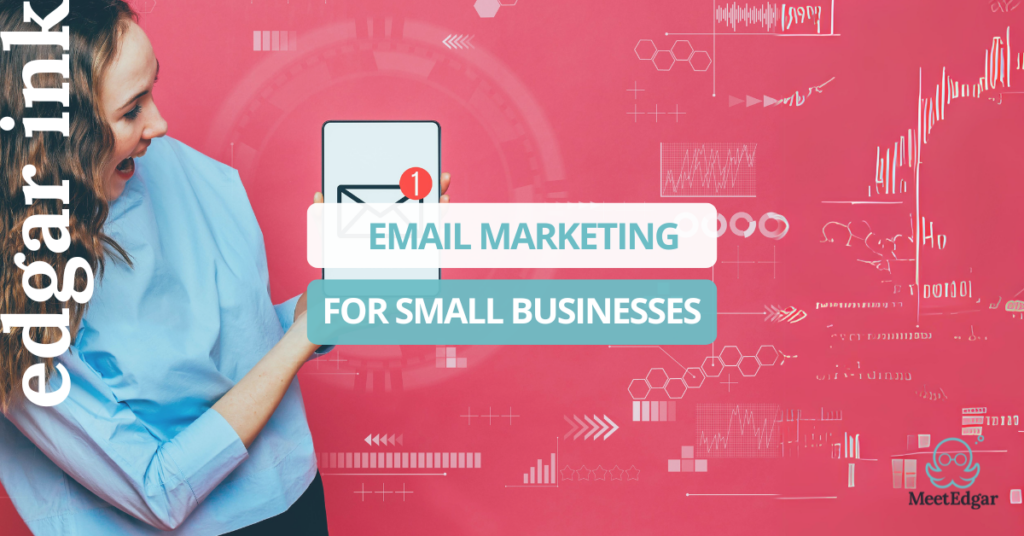Over 80% of small businesses that invested in email marketing have reported success. This proves that email marketing is worth investing in to gain high revenue for your small business.
In this post, we’ll explore the basics of email marketing for small businesses — from its benefits and challenges to the steps you can take to build an effective email marketing strategy.
Why email marketing is crucial for small businesses
Email marketing is highly beneficial for small businesses. Here’s why:
- Cost-effectiveness: Compared to other marketing channels, email marketing is cost-effective, allowing you to create and send email campaigns to a large audience for an affordable cost
- High ROI: The average ROI is $40 for every $1 spent. Although some ecommerce platforms report even more. For example, Omnisend claims an average ROI of $72 for every $1 spent on email marketing
- Targeted reach: With email marketing, you can send your messages directly into your audience’s inbox and segment your email list according to demographics, interests, or buying history, allowing you to send relevant messages to each recipient
- Scalability: Your email marketing efforts grow alongside your business, and email marketing software allows you to send a single email that reaches hundreds or thousands of customers, all at once
- Versatility: Email marketing serves various purposes, including promoting new products, sharing industry news, and running special offers
- Measurable results: Email marketing tools provide detailed analytics on how your campaigns perform, enabling you to track open rates, click-through rates, and other metrics to see what’s working and what’s not so you can refine your strategy for better results
How to build an effective small business email marketing strategy
To get started with small business email marketing, here are some practical steps to take:
Define your marketing goals
To build an effective small business email marketing strategy, you must clearly understand your objectives.
Take a step back to define your business goals and desired marketing outcomes. Studies show that 48.46% of businesses considered attracting new customers as their primary marketing goal, as shown in the image below.

Image via Service Direct
Other common goals that you can set for your email marketing strategy include:
- Increasing brand awareness: Are you aiming to introduce your brand to new audiences?
- Boosting sales and conversions: Do you want to drive traffic to your website or increase purchases?
- Improving customer retention: Do you want to strengthen relationships with existing customers?
With defined marketing goals, you can have a benchmark to measure the success of your small business email marketing efforts.
Build an email list
Your email list is the foundation of your email marketing success. It houses all the valuable contact information of potential and existing customers.
That said, how do you entice people to sign up and join your email community? Here are some effective email list-building methods:
- Website signup forms: Make it easy for visitors to subscribe to your email list by placing signup forms throughout your site. This can be in high-traffic areas like your homepage, blogs, and product pages.
Keep the forms concise. Ask only for essential information, such as their name and email address.
Take a look at this Blume signup form. It offers a simple signup process requiring only an email and a 10% discount to motivate visitors to sign up.

Image via Blume
You can offer valuable resources in exchange for email addresses. This could be an industry report, an ebook, or a free consultation.
- Social media promotions: Use your social media platforms to promote your email signup forms; for example, you can run contests or giveaways where entry requires signing up for your email list
- Event registration: Collect email addresses during events, whether it’s online or in-person, as a way to keep attendees informed about future events or when related content is published
Create engaging email campaigns
Your small business email marketing thrives on content, among other factors. This is crucial in capturing your audience’s attention and keeping them engaged.
Some of the top content ideas for your email campaigns include:
- Content promotion: You can share the latest updates about your brand, including blog posts, videos, or social media updates to keep your audience informed
- New product/service announcements: You can inform your subscribers about the launch of new products, allowing you to highlight features and benefits
- Promotional offers: Consider creating limited-time offers, discounts, or special deals to help drive sales and encourage engagement
- Newsletters: You can use newsletters to keep your subscribers updated on news and events
- Highly personalized automated emails: Welcome, cart and browse abandonment, product recommendation, anniversary emails are the most effective from all of mentioned above.
Now, let’s break down the essential components that make up an effective email campaign:
- Catchy subject lines: Craft subject lines that reflect the content of your email and are concise and catchy to grab your recipient’s attention
- Branded design: Ensure your email design is appealing and consistent with your brand identity; use clear headings, concise paragraphs, and relevant images
- Compelling copy: Write email copy that suits your brand tone and voice while being concise, informative, and persuasive; use active language to engage your audience and drive action
- CTAs: Design active CTAs that stand out and use actionable verbs to encourage subscribers to take the desired action
See how the following example from ARMRA has a concise CTA directing recipients to shop for the products after opening the email.

Image via Really Good Emails
Implement strategies for email campaign optimization
Now that you’ve created an engaging email campaign, you should learn how to maximize its effectiveness. Some of the strategies you can use to elevate your email marketing efforts are:
Email segmentation
A key strategy to optimize your email is segmentation, which involves dividing your email list into smaller groups based on shared characteristics. By segmenting your email list, you can tailor your messages to specific groups.
This will help ensure that each subscriber receives relevant content. You can segment your email list based on demographics, subscriber actions, or interests.
Email automation
Automating your email campaigns can streamline your email marketing process. You can set up automated email sequences for various events based on specific triggers.
Consider setting a consistent email cadence. For example, you can send an email every week, every two weeks, or every month to keep your audience engaged without overwhelming them.
A/B testing
This involves comparing two versions of an email element, such as the subject line, CTA, or email layout, to see which one performs better.
You need to create two variations, send them to a small test group, and then analyze the results. This data can help you enhance your emails for better campaign performance.
Analyzing email performance metrics
The best email marketing tools can help you track the performance of your email campaigns.
Some key metrics you should monitor are open rates, click-through rates, and conversion rates. They can help you understand what’s working and what’s not. This way, you can refine your strategy and improve campaign performance over time.
Challenges of small business email marketing
Email marketing offers a powerful ROI and other benefits. That said, it doesn’t come without challenges. We’ve listed some of the common challenges you might encounter so you can prepare for them.
- Finding the right email marketing tool: With the plethora of options for email marketing tools out there, each with its features, pricing plans, and learning curve, wading through these options can be overwhelming for a small business owner; that’s why 46% of small businesses consider this as their top challenge
- Building a quality email list: Growing an engaged email list is important, but it takes time and effort; you’ll need to use the right tools to attract subscribers and convince them to opt in
- Ensuring deliverability: While creating an email is important, you should also ensure that it reaches its intended audience and not be blocked by email providers, which can be challenging for small businesses with limited resources and expertise
- Content creation: Creating relevant content regularly is an important part of email marketing that small businesses with limited resources may find challenging
Conclusion
Email marketing is an essential tool for small businesses. It offers many benefits, from cost-effectiveness to high revenue and targeted reach.
By following the right strategies, you can build an effective small business email marketing campaign. You need to define your goals, build a strong email list, and create engaging content. You can achieve all of this by starting and trying different things to find what fits your business best.


